
Jim here... I'd like to quote a poem today. It's called "the lesson of the moth" by Don Marquis. It's from his "archy and mehitabel" series, published in the 1920s. If you're unfamiliar with the series, archie is a cockroach who types poems (in all lowercase, without punctuation) by jumping onto the keys of a typewriter. Here's the text:
i was talking to a moth

I suppose that, when you buy more produce than the average consumer, you come to observe a thing or two about that produce. We can't say for sure that our assertion is 100% true, but it sure does seem true to us. You see, we've noticed that produce we purchase at farmers' markets tends to keep longer than store-bought. Give it a try yourself, and see if your produce stays fresher longer!
Of course, there are many other benefits to shopping at farmers' markets. Aside from the produce being able to stay fresh longer, you're getting it in a much fresher state than store-bought. So, the things you eat first will be "extra" fresh tasting.
Read more: Produce Buying Tip: Farmers' Market Produce Lasts Longer!
Hi everyone!? Sorry for not posting yesterday. Things got crazy-busy on my end, and Wendi is still out of town on her tour. I know poor Deb Young is eagerly awaiting our next installment, as that's the one from Wendi and KDcat's visit to sunny L.A. (during which they had SO much fun and captured some great footage at a raw restaurant there!). However, I honestly do not have a single free moment this week. So, we'll pick up on Monday, April 5 -- by which time our raw travelers will have returned home!? Upcoming posts include:
- Los Angeles -- vids w/ Deb Young, visits to raw restauranrs
- Las Vegas -- vid interviews @ a raw restaurant there
- Arizona -- some Makin' It Monday stuff & staying w/ raw friends
- New Mexico -- visiting w/ raw friend Terri Mares & all sorts of interesting activity/video
- Oklahoma -- hanging at 105 degrees, & Wendi & Penni's raw event
- St. Louis -- visiting w/ family there & my mom as a guest Makin' It Monday chef!
- Geneseo -- visiting with family!! (Hi Cindy!)
- Chicago -- visiting with Danny & Kathy Living, and a raw event at Whole Foods
Some of those are multi-day posts, too, as we have so many interesting raw food goodies to share!? So, see you soon!
Original Comments
Below, we have included the original comments from this blog post. Additional comments may be made via Facebook, below.
On March 30, 2010, wrote:
You know we're always awaiting your installments. Your fans LOVE PureJeevan!!
You're such a sweet guy, and I even have more of the "inside scoop" on how sweet you are, so I definitely forgive you for not posting every day. Stay happy, and I'll see you in April.
Much love, Terri
On March 31, 2010, wrote:
Thanks Jim! that way I can post about the same time as you!
Mahalo!
aloha
deb
On March 31, 2010, wrote:
I love watching you check out new places - I want to do one of my own - maybe a UK raw tour...hmm...
On April 2, 2010, wrote:
How exciting!
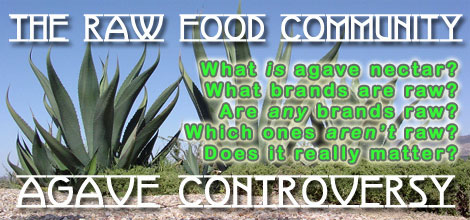
Within the raw food community, a controversy seems to have been brewing for the better part of a year! The topic: Agave nectar (also called agave syrup). Surely by now most people know what agave nectar is. For anyone who doesn't, it's a thick liquid sweetener made from, you guessed it, the agave plant.
In general, the production of tasty agave nectar involves heating the plant to a certain temperature (which varies widely according to which manufacturer is making it and which species of agave is used). The extent of this heating constitutes a significant part of the controversy (as most raw foodists believe that heating any food over a certain temperature, usually somewhere between 105 and 118 degrees fahrenheit, renders it "dead").
Read more: Pure Jeevan Explores the Raw Food Community's Agave Nectar Controversy
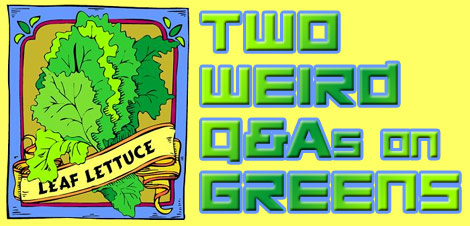
We all know what "greens" are in general. For example, no one questions whether lettuce, kale, spinach, or chard are greens. But on the other hand, all of those items *are* also clearly green in color. With that in mind, what would you make of the following two questions I (Jim) recently pondered -- tagged as "reader questions" so they're easily found in the future by other equally inquisitive people ;-) -- that seem bizarre, but are really quite interesting?
1. Are non-green greens (e.g., purple kale) still considered greens2. Are vegetables with green skins (e.g., cukes, zucchini) considered greens? (After all, they're green!)


This Thursday I want to give a special "Thank You" to Kevin Gianni. He was on my list for a Take the Time Tuesday introduction, but I didn't want to wait until then to tell you about him. I've been following Kevin's work on the Internet since he hosted The Raw Food World Summit last year. You can tell when you hear him speak that he's a genuinely nice, intelligent, caring person. He's honestly listening to what people are saying, trying to absorb the plethora of health information that's available. He asks a lot of interesting questions, too. He then takes what he has learned, condenses it, and shares the knowledge with the rest of the world. He does all of the hard work for us! For this, I wanted to give a special thanks to him.
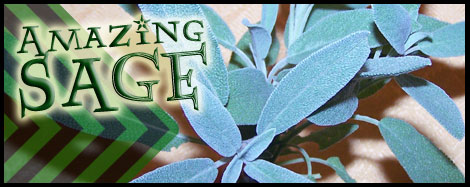
Well, we've always found the herb SAGE to be delightful in so many ways. That's why we've grown it here and elsewhere for years. Such a lovely, fragrant, sturdy, resilient herb, it's truly one of the easiest plants to communicate with -- and YES!, it truly IS a meaningful dialogue when you step out into the garden and sit among a patch of sage. All you need to do is listen carefully, and sage will speak its sage herbal wisdom to you.
I was wondering how sage came to be known as "sage" -- when all of the sources I had handy simply listed its technical name, salvia, along with its common name. Enter the great Wiki for an answer:
Read more: Please Tell Everyone: "I Read Some *Sage* Words at Pure Jeevan Today"

Since Pure Jeevan specializes in raw food weight loss, we receive a lot of questions about what is required in order to lose excess weight. Many individuals want to know if they need to go on a 100% raw food diet in order to release excess weight.
The answer is, "No, you do not need to switch to a 100% raw food diet in order to lose weight." If you're asking if a 100% raw food diet works better for losing weight than slowly transitioning and increasing your raw food intake, the answer is still, "No."
This video is nearly 10 minutes long (sorry, we'll aim for shorter ones in the future), but shows a full process for making a delicious, spicy nut dip. From there, we show two options for making the sandwich -- one using dehydrated raw bread, another using lettuce as the wrapper. I wanted to add that the packaged raw bread used herein is from Love Force, a great company that has provided sponsorship support to Pure Jeevan in the past. Here's a link to their site in case you're interested acquiring some of their bread or finding out where it's sold. (It's very good, as are their raw organic energy bars!)
Read more: Video: Jim from Pure Jeevan Makes Nutdip / Raw Sandwiches!
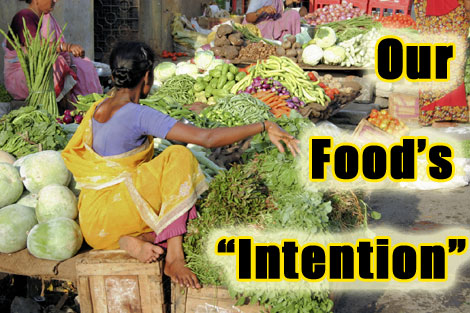
Jim here... During one of our marathon sessions at a Border's book store, I recall reading somewhere about the notion of a fruit's "intention" to be eaten. It's been a few years since I've read that, but I immediately resonated with the notion that many fruits, nuts, vegetables, and seeds are actually evolved to be eaten by other living beings and, therefore, to consume them (or their fruits and seeds) is to participate in a wonderfully nonviolent act that is in perfect harmony with a kind of primordial Earthen symbiosis. Whether these plants, vines, trees, etc. feel a conscious intention to have their fruit eaten by others is a matter of metaphysical conjecture. But, within the context of discussing vegetarianism, the argument is certainly relevant and fairly strong.
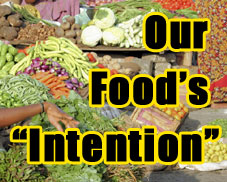 If you walk up to a farm animal, it may be impossible to estimate what's going through its mind, but I feel intuitively that it isn't, "Please kill me and eat my flesh." In other words, there's no "intention" present in that scenario. On the other hand, it's very easy to imagine that a tree produces fruit, knowingly or not, in order to produce offspring. Throughout the entire evolution of that tree, part of that reproductive process has involved animals (including humans) eating the fruit and then "redistributing" (which is a nice way of putting it, I suppose) the seeds naturally.
If you walk up to a farm animal, it may be impossible to estimate what's going through its mind, but I feel intuitively that it isn't, "Please kill me and eat my flesh." In other words, there's no "intention" present in that scenario. On the other hand, it's very easy to imagine that a tree produces fruit, knowingly or not, in order to produce offspring. Throughout the entire evolution of that tree, part of that reproductive process has involved animals (including humans) eating the fruit and then "redistributing" (which is a nice way of putting it, I suppose) the seeds naturally.

Jim here... Allow me to think out loud, philosophically, for a few moments, will you? I have a gut suspicion about something, but need to think it through a bit here. I'll start with a quote:
"There have also been a number of traditions around the world that describe a divine confusion of the one original language into several, albeit without any tower [referring to the well known story of the Tower of Babylon from the Christian Bible]. Aside from the Ancient Greek myth that Hermes confused the languages, causing Zeus to give his throne to Phoroneus, Frazer specifically mentions such accounts among the Wasania of Kenya, the Kacha Naga people of Assam, the inhabitants of Encounter Bay in Australia, the Maidu of California, the Tlingit of Alaska, and the K'iche' of Guatemala. ... The Estonian myth of "the Cooking of Languages" has also been compared."
